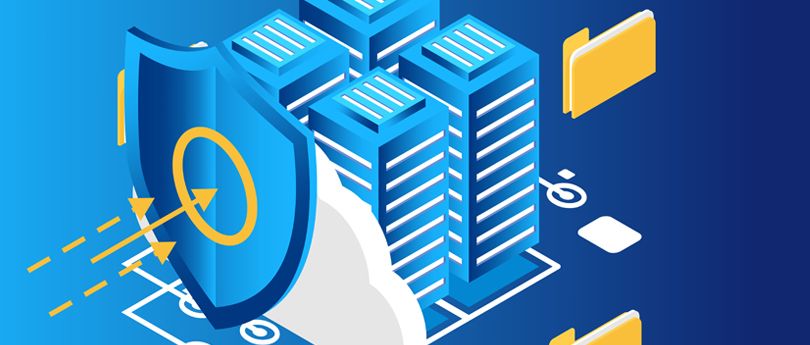Read time: 5 minutes
Exchange 4999 is a common error that appears in different versions of Exchange Server for various reasons. It can lead to serious email communication issues if not fixed in time. So, we will discuss more about Exchange Server error 4999.
Exchange Server error 4999
Exchange Server Error 4999 is noticed mainly in Exchange 2013 and Exchange 2016 versions.
In Exchange Server 2013 (Exchange Server 2013 Standard Edition and Exchange Server 2013 Enterprise), a System.FormatException error or event ID 4999 may be logged by multiple services.
The basic details of the error are:
Source: MSExchange Common
Event ID: 4999
Task Category: General
Level: Error
Keywords: Classic
User: N/A
ErrorReportingEnabled: False
The common error messages received are:
OR

And this error is found to appear multiple times in a short duration of time.
In exchange server 2016, an error 4999 is found to have a broad section of errors that may disturb the performance of the Exchange Server email flow.
Verifying the Exchange error 4999
The Exchange Server 2013 mailbox server gets the following string values in the event data as its symptoms-
Note: In Exchange 2016, these symptoms are not seen as OABGeneratorWorkCycleCheckpoint property value cannot be changed.
Reasons for the Exchange error 4999
One should always try to know the reason behind the problem. If you can find the reason, you will be able to solve the problem easily.
According to reports, these days, “Microsoft Exchange Service Host” is crashing or failing routinely. In Exchange server 2013, this error is caused by the crash of MSExchangeMailboxAssistants (the Microsoft Exchange Mailbox Assistants service), affecting the hierarchy synchronization of public folders and OAB (offline address book) generation.
Also, this error appears when the OABGeneratorWorkCycleCheckpoint property is set on a value greater than 49. Another major reason for this error is the non-setting of showInAddressBook attribute. The following issues also can be the reasons
- Avoiding Exchange Server regular updates
- Installation of third-party applications
- Other software updates
- Antivirus compatibility issues
- Exchange Server configuration issues
- An expired or about-to-expire certificate on the server (read also auth certificate missing error)
How to avoid Exchange error 4999?
To avoid event ID 4999, we should check the details related to the Exchange environment. First, go to the Search bar and type Event viewer. In Event Viewer, you can learn more about error 4999. After finding out about Event ID 4999, you can proceed to resolve the error.
Methods to fix the Exchange error 4999
Based on the reasons described above, there are different ways to fix the Exchange error 4999. Let us see them one by one.
- Change the OAB property value
- Update the accounts
In Exchange 2013, updating the accounts will help to fix the issue. It will help to have the correct value for the showInAddressbook attribute.
And installing the Cumulate Update 15 or later will automatically solve this issue in Exchange 2013. - Check the background processes
Now you can start by checking what is going on in the background. Check if any Windows or system updates are running, because sometimes new updates come with features that are not supported by the existing version. Also, check if any backup process is going on or if any maintenance is running. Close these processes running in the background as this may adversely affect the Exchange Server. - Check for antivirus and third-party installations
Sometimes antivirus scans running behind can also affect Exchange Server; hence try to avoid running the antivirus scan. Also, try to avoid installing new antivirus because sometimes it doesn’t seem compatible with Exchange Server. Also, if there are any third-party application installed, check if it is compatible with the Exchange Server or not. - Check Exchange Server services
Check whether all Exchange Server services are running or not. Also, by running the command Test-ServiceHealth, validate all the services that are required. This is also used to find configuration issues that cause performance issues and other long-running issues in the Exchange Server environment. - Check Disk Space
Insufficient disk space is also one of the factors which may lead to such an error. Lack of disk space affects the delivery of emails which results in data. So always try to keep enough space for the smooth running of operations on the system. Also, one should examine the volume of transaction log files. If you find a huge volume of logs there, it is because of a backup issue. Hence it is necessary to check the backup process. And sometimes incompatibility between application and Exchange Server version can cause such an issue. - Run updates
Microsoft releases security updates to fix bugs and resolve errors. Therefore, to keep your Exchange Server environment protected, immediately install the updates from Microsoft. This is an easy way to keep your system safe and secure. - Try a professional Exchange recovery tool
Kernel for Exchange Server is a tool highly recommended by Exchange experts and professionals. It easily restores corrupt Exchange EDB files and is fully compatible with all Exchange Server versions and Office 365 plans. You can easily extract mailboxes from offline EDB files and Exchange backup files to save them to destinations like Exchange, Outlook PST, or Office 365. With this tool, you can easily migrate from one Office 365 tenant to another Office 365 tenant too besides it helps you to recover deleted contacts in Office 365. And this tool comes up with a user-friendly interface.
In Exchange 2013, one can change the value of OAB by running the following cmd-
Here, keep the OAB property value below 49.
Conclusion
Hope you all find this information useful to resolve your Exchange error 4999. The above solutions will be going to resolve your issue. But try to use a manual solution only if you have proper knowledge of Exchange Server; otherwise, you can go for a professional solution with a brilliant support team and user-friendly interface.







